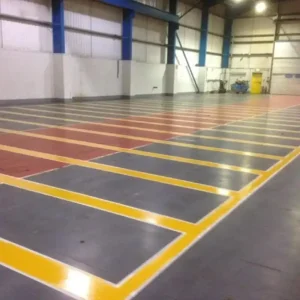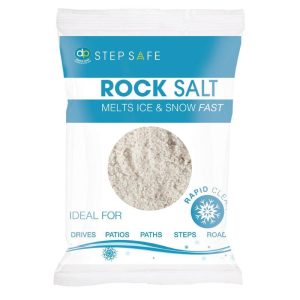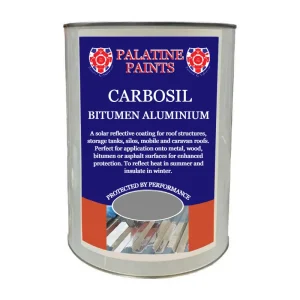All Blogs, Priming and Protecting, Weatherproofing
Questions About Bitumen Based Paints
Questions about bitumen based paints?
We hope we’ve answered them for you in this blog!
Natural bitumen has been used, tried and tested for thousands of years and is known for its waterproofing and adhesive qualities. Natural bitumen is found in deposits such as oil sands and pitch lakes, while refined bitumen is obtained as a residue from the distillation of crude oil.
Bitumen paints and coatings are popular in many industries and leisure sectors.

What is bitumen paint used for?
Bitumen paint is suited to many different applications because of its weatherproofing, corrosion resistance and adhesive properties. It is primarily used as a protective coating for buildings, structures and items constructed from iron, steel, concrete, masonry and wood. It is generally seen as an economical option and can be used both above and below water or ground.
Fun Fact
“Bitumen is the oldest known engineering material and has been used from the earliest times as an adhesive, sealant and waterproofing agent. As long ago as 6000BC the thriving ship-building industry in Sumeria used naturally occurring bitumen, found in surface seepage in the area.”
Credit: https://www.isfahanbitumen.com/bitumen-blog/117-history-of-bitumen.html
Where can you use bitumen paint?
You’ll find bitumen paints used in all sorts of situations. A versatile paint, it can be used on both ferrous and non-ferrous metals as well as concrete, wood and masonry.
It’s frequently used on metal guttering, fire escapes, stairways, ladders, railings and fences. In the marine sector, bitumen paints are commonly used on boat hulls.
Most people associate bitumen with roofing and it is of course commonly used as a weatherproof overcoating for flat roofs, felt roofing and industrial roofing. It is ideal for this purpose as it dries fast which is great advantage here in the UK where it fluctuates from warm to wet so quickly!
Bitumen is also used in roofing compound for quick repairs, in mastic for sealing and for gluing roofing felt.
Bitumen is still sometimes used for damp proofing below-ground brickwork and concrete foundations. As it is contaminant-resistant and has no odour, the coating is also suitable for water tanks (not drinking water) and similar applications.
How long does it take to dry? What does it look like?
Most bitumen paints are dry in two to four hours. When dry, bitumen paint creates a thin black film which has the advantage of being odour free. Our bitumen paint and bituminous barn paints have a slightly glossy rather than a matt finish.
How long will bitumen paint last?
Bitumen paint is usually long lasting. If applied to a porous surface like masonry it will last longer than when applied to less porous surfaces, especially those subjected to long hours of extremely hot sun.
Narrow boat owners tend to do their re-coating every three to four years. Bitumen paint on a felt roof will usually last 2 to 3 years before it shows signs of drying out. To extend and preserve the life of the felt roofing, consider apply a protective coat of solar reflective, bitumen aluminium paint.

Can Bitumen paint be applied onto OSB Board or Sterling Board?
Bitumen paint can be applied to most types of wood and engineered board such as sterling board and OSB board. However, some OSB has a wax finish which the bitumen paint may struggle to adhere to. If you can remove the wax, all the better, if not, try a test patch first.
Another customer asked whether bitumen paint would cure seeping water through wooden plyboards on a shed. The answer in general would be yes, as long as there are no actual hole’s present. A minimum of two coats would be recommended in this case.

Are there any disadvantages to bitumen paint?
- For some applications, it is not the most attractive option
- It is also generally only available in black. We offer bitumen paint in green and our bitumen based barn paint comes in several shades but they are on the darker side
- Bitumen paint can be difficult to apply in very cold conditions
- You are limited to what you can overcoat with it as it will bleed through certain top coats
- While it’s generally reasonably heat and UV stable, its lifespan may be reduced in extremely hot and sunny countries.
What are the advantages of bitumen paint?
- Usually cheaper than many other coatings offering similar weather proofing performance, it’s an economical option
- Suited to application on multiple surface types from iron, steel, concrete through to masonry and wood
- Anti-corrosive
- Weatherproof
- Odour free
- Quick drying
- Good adhesive properties
- Durable
Is bitumen paint toxic to plant life?
Once fully cured to a dry film, our bitumen paint is not toxic to plant life. In fact it would be ideal for painting the insides of wooden planters etc. Similarly, bitumen paint can be applied to wooden posts to be buried in the ground as long as it is allowed to fully dry before coming into contact with the soil.
What precautions to take when applying bitumen paint?
Protect skin and eyes and apply in well ventilated areas outdoors, do not inhale. Do not apply near open flames, sparks, heat or hot surfaces. sources. Dispose of any waste responsibly as it is toxic to wildlife. Do not swallow.
Would bitumen paint be suitable for protecting the underside of a steel trailer?
Bitumen paint would be an economical solution for this purpose and will provide protection from water and to some extent, knocks. The only thing that might affect the long term properties of the paint is attack from salt on the roads etc. But it’s generally a good solution that will give two or three years protection, before recoating is necessary.
Should bitumen paint be applied before or after roofing felt?
Felt adhesive such as Carbobond, is a solvent based mixture of bitumen, fillers and fibres, formulated for bonding felt (as the name suggests), so it is better to apply this first then the roofing felt which will (of course) adhere to it. Bitumen paint can then be applied on top of the roofing felt for extra protection and/or aesthetics.
Will bitumen paint cure a leaking concrete roof?
Bitumen paint is an economical solution for this problem, if there are serious cracks in joints etc, repair with roofing compound, then paint over with Carboblack.
We have also been asked what products can be painted over a previously bitumen painted concrete roof. Generally, it is fine to paint a bitumen paint over another bitumen product; if the reason for painting is to change the colour, then consider a bituminous barn paint like Carbolustre or Green bitumen paint.
We do not usually advise applying alternative coatings over bitumen paint as the bitumen tends to bleed through the topcoat.
Application tips for bitumen paint
Prepare the surface well by removing dust, oil, grease, old coatings and surface contaminants. A primer is not usually needed with bitumen paint but occasionally for additional protection of bare metal surfaces, prime with Zinc Rich Primer or Metal Primer. Use fast dry etching primer for non-ferrous metals.
Best results are obtained in warm (minimum 10°C), dry conditions and we recommend application of 2 coats. Use Conventional or HVLP spray, brush or roller.
Our bitumen paint products
Here are details of some of our bitumen based paints. As always, we’re available to answer any questions you have via our contact page or the online chat facility.
Carboblack is our black bitumen paint which has great weatherproofing properties. This solvent-based bitumen paint dries to form a weatherproof film. It widely used in the industrial, agricultural and marine sectors. Some examples of Carboblack Bitumen Paint in use are: boat hulls; structural steel; concrete roofing, pipelines and asphalt surfaces.
Carbolustre 2000 Barn Paint is our flexible, weatherproof paint for sheds, barns, outdoor wood and metal. Our barn paint is a mix of high blend bitumen and alkyd resin waterproofing – not only attractive, but with great protective qualities. It can be applied directly but will perform best when coated over selected Palatine primers and undercoats. Choose from 5 subtle shades grey, olive, brown, green and black.
Carbosil Bitumen Aluminium is for over-coating bitumen-based surfaces. It helps protect surfaces from heat/UV light damage, with a decorative coating and will enhance the lifespan of bitumen-type roofing materials. The flexible, heat resistant and solar reflective surface has outstanding weather resistance and durability. Ideal for use on roof structures, storage tanks, silos, mobile homes and caravan roofs. Reflects heat in the summer and insulates in the winter.
We also supply roofing mastic, roofing compound and felt adhesive.

































Can bitument paint be applied directly over a hybrid polymer sealant/adhesive sittiing in the dormer roof joints? Many thanks.
When it comes to applying bitumen over a hybrid polymer sealant/adhesive like CT1, it’s important to consider the compatibility of the materials. CT1 is a versatile sealant and adhesive that can be used on a variety of surfaces and is known for its strong bonding and sealing properties. It can be painted over once fully cured, which suggests it may accept other coatings as well1.
However, specific product data sheets, like the one for EVERBUILD® STIXALL®, advise against using bitumen in conjunction with hybrid polymer products3. This is likely due to potential chemical reactions or adhesion issues between the bitumen and the hybrid polymer.
For the best results and to ensure the longevity of your application, it’s recommended to consult the technical data sheets of the specific products you’re using or contact the manufacturers directly for guidance. They can provide the most accurate information regarding the compatibility of their products with bitumen. If you’re using CT1, you might want to check if there’s a similar advisory against using bitumen with it. If there’s no clear guidance, a small test application in an inconspicuous area could help determine compatibility before proceeding with a larger application. Always prioritize safety and follow the manufacturer’s instructions for both materials.
Hello,
Can I paint over bitumen paint? I painted the corners of my flat roofed shed where screws were. The random black painted areas doesn’t look very nice. Can I paint over them with white masonry paint?
Please help 🙂
Hello
If you are to paint over bitumen, use a water based masonry paint like Trutex or Sandtex masonry paint. Solvent based top coats will often soften the bitumen and blead through the top coat. Always carry out a test patch to confirm the compatibility. I hope that helps.
I have just installed a plastic membrane roof and sealed the joints with heat gun . I have painted over the heat sealed joints with bitumen paint for added protection .
Would it be ok to paint the whole lot with bitumen paint ?
Hi Grant, There maybe some adhesion issues with bitumen on plastic and this would only assist cosmetically as the plastic membrane should have a reasonable life span. Maybe consider a small test patch and see how it performs over this winter and summer next year. This may assist your decision.
I’m building a deck next to my pool. The area is already concreted and I only have about 80mm of height to play with. I’ve opted to bracket joists directly to the concrete sitting about 7mm off the surface. Will bitumen paint be able to water proof where the fasteners meet the timber?
Hi Scott, yes the bitumen will provide a waterproof barrier. You would need to ensure that the porous timber becomes sealed with the bitumen which would be determined by the number of coats needed to be be applied. Usually 2-3 coats. Always carry out a test area to determine there are no adhesion issues.
Could you apply it to damp concrete
Hi Jim
Unfortunately we would not recommend to apply this to damp concrete. The substrate needs to contain less than 7% moisture to achieve the best adhesion.
Does black tar varnish affect glues used on wood boats if you put it on the hull in a salt water environment,
Hi Toni, Do you know what type of glue(s) they are?
I want to bitumen cover an outside brick wall, at present painted in a dark cream masonry paint.
What tips can you give me please ?
Hi John, Please take a look at https://www.palatinepaints.co.uk/product/black-bitumen-paint/, if the masonry is clean and sound this product would be ideal. Be aware that Bitumen eventually dries out through direct sunlight.
Can bitumen be used on decking?
Hi it would melt once hot and would end up sticky it cant be walked on
I have read this post and find it really informative for me. Thanks for sharing it, I hope I can find more in the future.
These paints look promising. I have already heard good words about them. I am looking forward to trying them next time.
I have a question, if I paint my sandwich board roof with a generous layer of bitumen paint and spread very small diameter gravel on top whilst wet, would the gravel stick to it, I’m looking to make the roof blend in with my driveway. Many thanks, David.
This may work, we suggest trialling a small test area first and allowing a week or so to ensure you are happy with the result before applying to the full roof
I am wondering how effective bitumen paint would be to stick new composite decking down onto existing timber decking. I need to paint the timber anyway before covering it with the composite boards. If I paint thickly enough might I be able to dispense with screws, or is that asking too much of the paint?
That might be asking too much of any paint to be fair. The bitumen paint would certainly protect the existing timber but we advise using an appropriate adhesive or screws to affix the new decking boards.
It says that bitumen is toxic to wildlife, but it is used on narrow-boats (that will get launched into canals). Is it only toxic to wildlife in its wet state? But once cured and dry, no longer toxic? Any help greately appreciated. Thank you.
Yes once it’s dry bitumen paint will not cause harm to wildlife. It is not however recommended for potable water tanks etc
Thanks a lot to you for sharing questions about bitumen based-paints here, these kinds of ideas are were much needed. I really appreciate that you have provided the data too, really appreciative and useful blog for us. Looking for more!!
can i use this to fix exterior holes in my caravan? will i need a sealant first?
For repairing holes you would be better looking at roofing mastic first then following with a bitumen based paint such as our Carbolustre or Carboblack
is it bitumen sealant safe to paint fish tank crack?
Hi I’ve used bitumin paint many years to coat either sterling board or external plywood which forms the sides of our very large shed (garage size) we have just had a guy put us 2 x 4×8 foot panels on one side of this shed as a repaire but he says we shouldn’t use bitumin as it layes on top and cracks and flakes off and allows water to get being then rotting the plywood…
He wanted to use creacote but 1 I can only get dark oak not black and 2 he’s used silicone sealer in the joints so creacote won’t cover that it just runs off. (OBVIOUSLY LOL). is the an undercoat I should use to help the bitumin key better to the plywood. Pity I can’t add any photos.
Carbo Black Bitumen paint would provide good weatherproofing but an alternative would be Carbolustre Bituminous Barn Paint which is a mix of high blend bitumen and alkyd resin waterproofing, this has a more flexibility than the bitumen paint.
I can’t offer an answer, but am interested, too in this question, for repairing a small crack in my small bath-tub pond: If I let the paint dry for long enough before adding the water again, is it ok for frogs? I’ve done it on a previous pond with no ill effects, using bitumen paint, but interested to hear any comments. Thank you.
I would like to use bitumen on our garden room rook it’s made of I think polycarbonate is that ok please????
There may be some issues with adherence of the bitumen paint onto polycarbonate which means it may not be the best solution. You could try a primer such as Zinsser Bullseye 123 and coat that with bitumen paint?
Hi. Please help. I’m so worried. My husband brought home bitumen. I hear bitumen is toxic to pets, wildlife and humans. He purchased a 10 litre bitumen paint for our tiny home to waterproof the roof outside. We live here 24/7. Maybe we shouldn’t use it??
What cis your experience of such confined conditiins please.
Many thanks.
King regards
As your husband intends to use this on an exterior roof, this should be fine. Ensure any animals are kept away whilst the product is being applied and until it’s dry.
I have put bitumen spray paint on my concrete balcony floor its been 24 hours and it’s still sticky what can I do is their a paint I could put on top any suggestions thank you
I want to paint the inside of a water tank using either an airless sprayer or pressure pot.
Can you advise how much I should thin the paint with white spirit.
Also does it need sandblasting or can I just wire brush the loose paint and small rust patches.
Hi I am thinking about painting my concrete garage roof with bitumen as a sealant,but also paint my inside single skin brick walls which can be very damp in winter can you advise would this be beneficial.regards Jim.
Hi there. Can bitumen be used to coat the inside of a vegetable planter? I. E is it safe? The planter will have a membrane liner but these are usually slightly porous.
Thank you
Regards
Lee
hi would it be possible to email me some pictures off this showing the green colour, im thinking off painting the roof off my wooden gazebo which has a feather edge roof and leaks very slighty so hoping this would fill the small cracks and seal it
Hi, I was thinking of giving two coats to the inside of some new timber planters I am making. Do you know if this would be ok and not effect any vegetables I intend to grow in the planters?
Many thanks
I have a tin of bitumen paint but its gone hard can I get it useable again
Hi
I’m hoping for some advice regarding the additional protection of galvanized steel below ground level.
We have a small canopy to a building that has two 200x200x6.3thk SHS steel columns bolted to concrete foundations circa 500mm below ground level.
We have been asked to verify that the columns will have a design life of 60 years.
The steel will be hot dip galvanized (120 micron) and coated with epoxy paint. However, we intend providing an additional two coats of bitumen paint taken up to 50mm above ground level (tarmac path).
Have you any information that would help verify the design life of the steel? The backfill material is sub base type 1 recycled material but we have no chemical testing to hand. How long will the bitumen paint protect the painted steelwork?
Any assistance would be much appreciated.
Many Thanks
Andrew
Hi Andrew
We don’t have any exact figures on this except to say that a bitumen coating would increase the overall lifespan.
We would recommend the coating be extended 100mm above the surface to further assist.